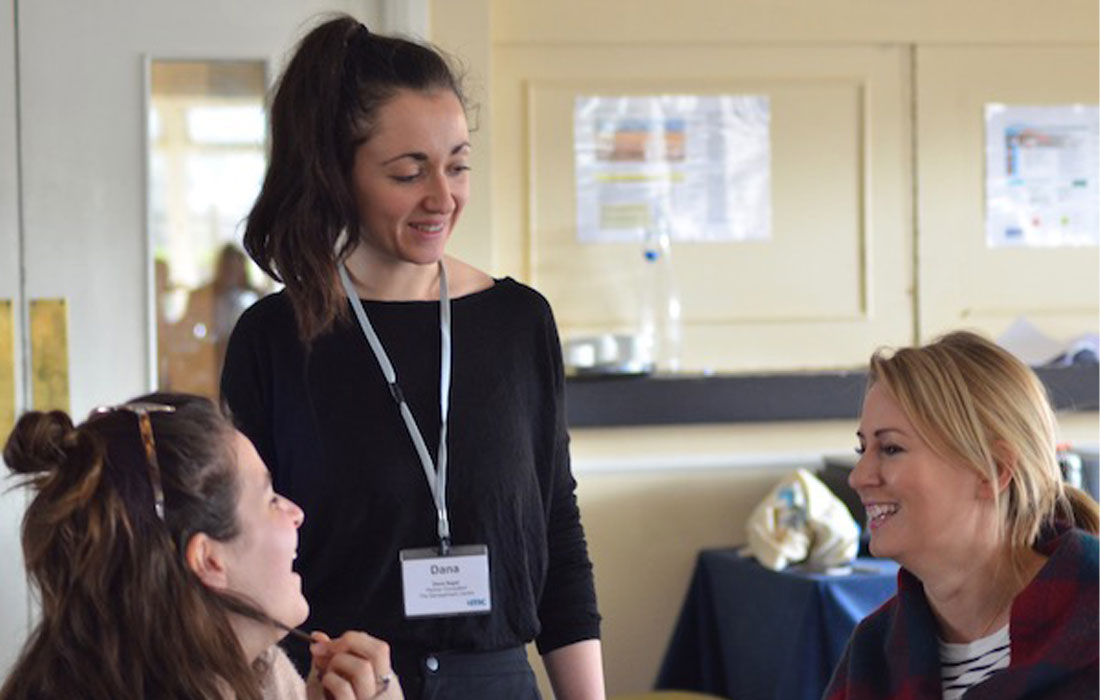
Dana teaching at the National Arts Fundraising School
Photo: © Anna Esslemont
Nothing but a number? Young people on boards
It's great that arts organisations are recruiting young people to their boards – but they need to really think about why, says Dana Segal.
Aged 25, I joined the board of Emergency Exit Arts, a national outdoor arts organisation, and three years later I am now chair of the board. When I joined, my age was never discussed. I was appointed for my skills as an arts and cultural sector fundraiser, consultant and trainer, and as a theatre practitioner. The experience of being recruited for being me, rather than being my age, made a huge difference to my sense of worth as a board team member from day one.
If you’re not willing to change the way you do things, how do you expect to change the members of your board?
I spoke with one young trustee who was asked to join his board because of his technology skills, not because of his age. Despite not knowing what a trustee is meant to do, he thrived in the board room and helped the organisation re-imagine a whole new digital system to improve the accessibility of its services to young people.
If you’re bringing young people on to your board, you have to ask yourself whether, as an organisation, you are genuinely open to changing the way you do governance. When is the last time you changed the way you run your meetings? Or used a new digital tool to track and share your key performance indicators? If you’re not willing to change the way you do things, how do you expect to change the members of your board?
Meaningful involvement
There are a number of arts and cultural organisations around the country that are meaningfully involving young people in their governance:
- The Mighty Creatives, Leicester: This bridge organisation developed the Board Academy, a programme to support young people to develop the skills to confidently join the boards of arts organisations.
- Contact, Manchester: As well as having two young people on the board, its recruitment process involves candidates meeting a board panel and a young person panel.
- The Roundhouse, London: As well as having a youth advisory board, it appoints two young people to its board every few years. It has shared its learning in the form of a guide.
- Sound Connections, London: It has a youth engagement programme called Wired4Music from which it develops a pipeline of talent. Many members have since become trustees, staff and freelancers, ensuring young representation across the organisation.
Joining a movement
Depending on the strengths and resources of your organisation, it’s worth considering how you can contribute to the wider youth governance movement through awareness-raising, recruitment and training.
There is no magic formula to this, but the young trustees and organisations I’ve spoken to have some advice to share:
- Don’t just pick one: Don’t assume that by recruiting one young person to your board you’ve cracked it. That very act might be the thing that makes them retreat and not feel able to contribute in the board room.
- Don’t talk about their age: This can instantly alienate, create divisions and feel tokenistic.
- Change your recruitment process: Getting someone to construct a CV and cover letter about a complex voluntary opportunity can be a barrier. Instead of asking young people to talk about their experience (which can come across as old school), ask them to talk about their potential and the ideas they want to bring instead.
- Don’t assume: Many existing trustees and organisations worry that young people won’t get the risk management and financial paperwork side of governance. Provide all trustees (not just the young ones) with some basic training and ongoing support, and make sure you ask yourself whether you have explained it clearly.
- Make meaningful connections: Avoid contacting a young person network to advertise your young trustee opportunity. Instead, give them a venue or a donation, or attend one of their events, and actually get to know them in a more meaningful way. Create authentic relationships as you would with any potential funder, partner or desirable arts trustee.
What’s next?
For me, a critical issue that is still unaddressed is the lack of a network, support and infrastructure specifically for young trustees in the arts and cultural sector, whether that’s a digital network, an annual event or a national programme.
Every time I meet a fellow young trustee, I wonder how we could better connect and represent existing young trustees who are already making a difference. I believe this would change perceptions, attitudes and behaviours to better engage with youth governance across the sector.
Dana Segal is a consultant in fundraising and not-for-profit management working across the UK, Europe and Asia.
Tw @danaksegal
A previous version of this article was commissioned by the Cultural Governance Alliance, which is keen to share tools and tips on getting this right. Share experiences, advice and suggestions via Twitter @GovernCulture or email [email protected]. Join the alliance for free at www.culturalgovernancealliance.org/join-us
Join the Discussion
You must be logged in to post a comment.